Insights into Manchester Part 3: Serendipity and the Secret Garden in the City’s Central Library19/2/2018
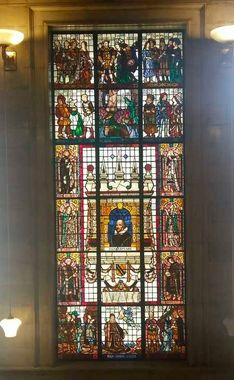 Shakespeare stained glass in the Entrance Hall Shakespeare stained glass in the Entrance Hall As the sun streamed through the windowpanes, the people below were painted in the light of the Shakespearian stained glass. With the Bard of Avon at the mediating centre, each part of the giant artwork stood out depicting his famous characters and their unforgettable stories. Illuminated, those who enter the Central Library of Manchester bask in their coloured light. Storied stained glass is only one piece of Manchester’s Central Library. On Thursday morning, I met with Ian Hopkinson, the library’s service development specialist. We began our conversation in the library entrance referred to as Shakespeare Hall. As spaces, libraries have been strongly branded in the past. Most of what we do is need-driven. Thus, people tend not to think of visiting libraries unless they need a specific book. But now, libraries are evolving to offer so much more than what we know we need. They are expanding to anticipate our needs and spark further curiosity, revealing to us what we didn’t know we needed. The library went through major renovations in 2014. The desire to increase accessibility and outreach were at the centre of these changes. Since then, the library has become “a genuinely public space” where everyone is welcome. Whether it is to find shelter from the Mancunian rain for a moment or to spend hours pouring over Carol Ann Duffy poems or anything in between…the library is the ideal space. Before 2014, the library had one main entrance, now it has five. As soon as you enter, you are greeted by an open space. Where there used to be rows of archival stacks now stands the interactive Archives+ feature showcasing local stories with digital maps and informative tidbits of foundational Mancunian history. Right next to it is the Library Café where I had a mocha before meeting Ian. It’s a completely open space where you can feel free to meet your friends to chill or linger for a solitary meditative mocha like me. That’s only the first floor. 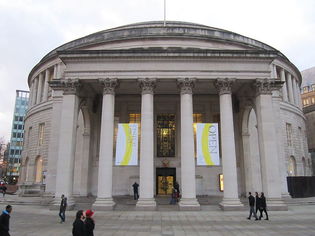 “Meet me on the library steps” is how many young people in Manchester propose a romantic date. As Ian described, there is something un-miss-able about the library’s giant pillars and coliseum-like spherical form. It’s assertive, maybe a good way to woo a lover but potentially daunting as well. Ian told me that the main focus nowadays is motivating people to go further than the library steps and convincing them that crossing the threshold offers a wealth of resources and possibilities that they might be missing. 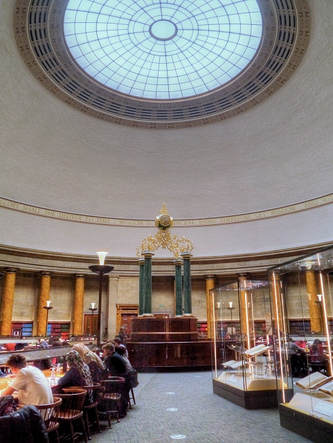 The Wolfson Reading Room The Wolfson Reading Room If you travel up to the second floor, you will find a special collections exhibition space, a music library and at the centre, the Wolfson reading room. To mark the centenary of the end of World War One, the library’s exhibition space is showcasing poignant paintings that happen to pay tribute to the Newfoundland Regiment. A must see. Walking out of this space leads into the music library where sheet scores, music books and even instruments are on hand. Thus, the music library doubles as an intimate public performance space while simultaneously being a serene space for connoisseurs and rookie seekers alike to delve deeper into music research. The hall of the music library surrounds the Wolfson Reading Room. Essentially, the whole library is built around this room. It is a completely quiet place to be shared with others as they work. The ceiling is high vaulted and the light pours in through a circular window way above our heads. When inside, you work alongside others but still, it truly feels like a room of one’s own. The third floor is the business library. This is the space you would visit not only to read up on business schemes or how to’s but also where you would go to get connected. This library holds workshops and organizes class sessions with working professionals in the area to give you access to key insights covering everything from rebooting your career to starting your own business. This library is a prime networking tool. 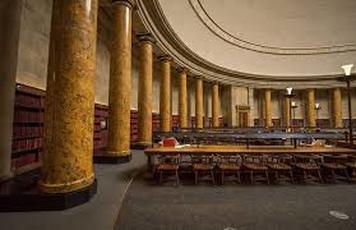 Wolfson Reading Room Pillars Wolfson Reading Room Pillars We took the elevators to visit one final floor downstairs. As we zoomed down, the glass walls of the elevator encased the entirety of all that we had seen. Every floor holds a different space to accommodate a different need. As Ian told me, one goal of the Central Library is to create varied environments all within the same space. It’s a tall order. However, diversity in spaces draws crowds of diverse people. Everyone will find something for themselves at the Central Library. And hopefully, they will find more than they are looking for. Ian talked about serendipity. Planning library spaces and providing resources within those spaces is actually a poetic practice. If you create a space that is enticing and rich enough to encourage people to explore, you could be setting them up for a perfect serendipitous moment. At any instant we could fall in love with new local poets, or recall childhood memories hearing a sweet piano ditty in the music library. At any instant, you could find a study partner in the reading rooms or stumble upon family history that you never knew. With careful planning, patience, silence, music and maybe – a touch of serendipity, the Central library becomes the ideal space for an amazing moment.
UNESCO has declared, “Reading for pleasure is the single most important thing that will make a child successful in life.” With opportunities to join librarians for story time, rhyming and songs, library-going children under five are being raised as readers. The moral of Burnett’s Secret Garden is that with nurturing care, everything can grow. The presence of this mini library within the Central Library affirms trust in children and insures hope for their futures. Encouraging their sense of childhood wonder in its full bloom. With its archives, spacious café, gallery space, reading rooms, music library and wealth of resources, Manchester’s Central Library is a vibrant store of information. It is where people meet and it is where interests are piqued. It is a steady hand in the community and ultimately, it is the place where ideas come to light.
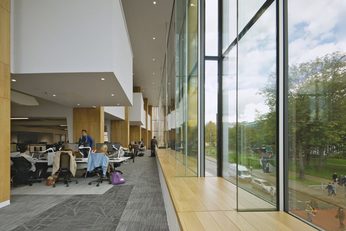 Inside the Commons - Photo Courtesy of Sheppard Robson Inside the Commons - Photo Courtesy of Sheppard Robson The incredible part about this space is that it is a resource hub. Often, there are places that inspire us because of how they look and then there are places that inspire us because they provide us with the tools to be inspired. This is both. The Learning Commons here runs workshops through its My Learning Essentials program that tackle everything from academic referencing to time management to “successful searching”. Their team also runs a program called DigiLab that allows students and staff to “explore tomorrow’s technology” by trying your hand at the newest software and tech gear along with learning how to code. The power of an open space and a place to explore one’s potential through tech and workshops is palpable. One of the greatest learning essentials is having a place to be and think freely. Peering through the clear glass windows of the commons onto the bustling Mancunian streets, one can’t help but feel hopeful for the future. When the learning commons was built in 2012, 30 student artists and poets were welcomed to decorate the walls with inspiration for future students. One poem by Meaghan J. Couture stands out. Here is an excerpt: As the moon illuminates the sky and dances with the stars, In buildings such as the Learning Commons, students are provided with an open space where they can seek new ideas and work to find inspiration. Manchester’s promise of tomorrow is in these inner workings. Connected with this idea of utilizing space in Manchester, the artist Naho Matsuda has found a way to generate poetry out of the traffic and events that take place in Mancunian city spaces every day.  A poem generated by everythingeverytime.net A poem generated by everythingeverytime.net Matsuda recently designed a computer program that generates poetry from information about Manchester. The computers are situated around the city and select random bits of information on local topics such as weather, healthcare, schools, how many babies are born, cats, dogs and dance halls to create “impractical poetry”. All of this is made accessible online through the project website, everythingeverytime.net. Thus, the act of exploring spaces to their fullest potential becomes poetry in motion. The idea of finding this poetry in everyday epiphanies and daily life is so normal but yet, remarkable. Poetry is written in the places where we can circulate and share ideas and stories of our lives and studies freely. Look closer. You can’t miss it. Listen to the CBC Podcast coverage about Matsuda's work here (at 41:05 mins) |
CategoriesArchives
October 2023
|
|
Literacy Quebec
4590 rue de Verdun suite 206 Montreal, QC H4G 1M3 |

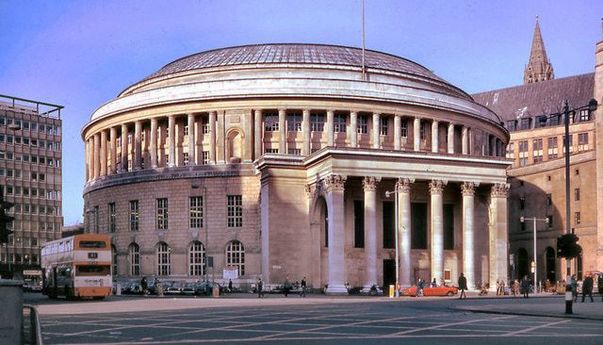
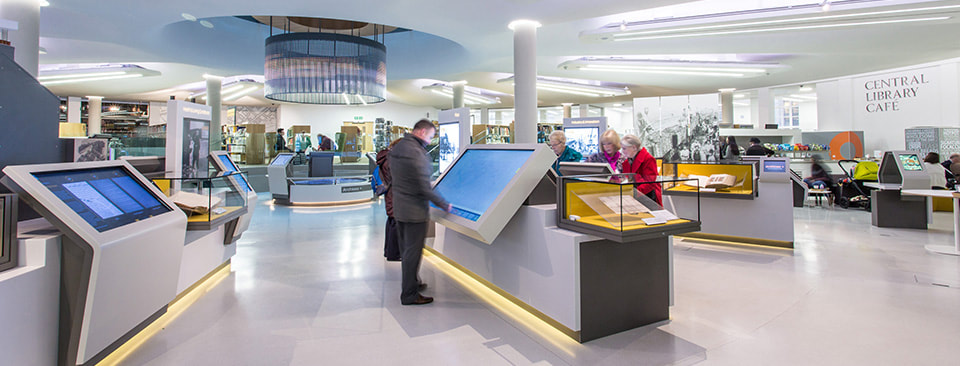
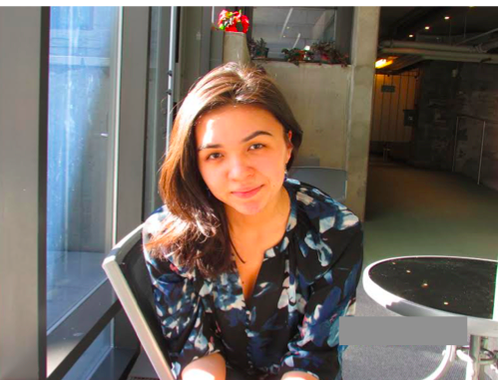
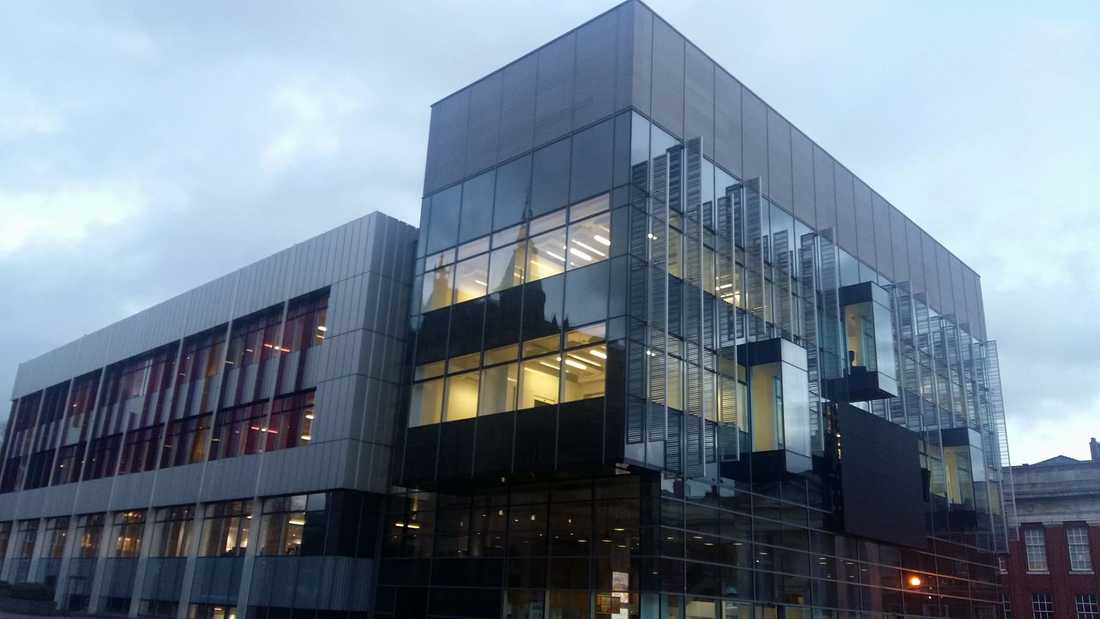

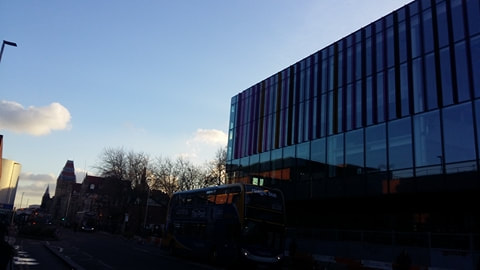
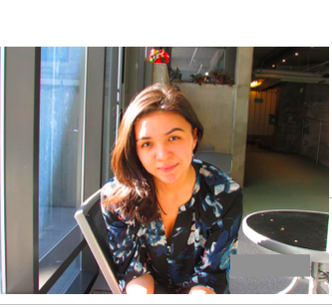
 RSS Feed
RSS Feed

